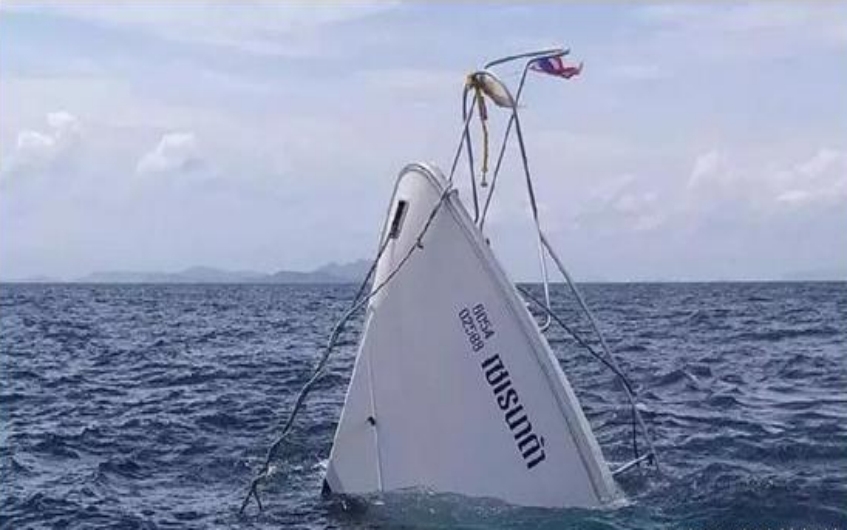
The U.S. Coast Guard reported on May 21 local time that a vessel sank in the waters north of Seattle, Washington State, leaving three people missing and only one rescued. This incident once again exposed the systematic loopholes in the United States in terms of water safety management, emergency response mechanisms and maritime supervision. Although the incident is still under investigation, it can be seen from the available information that the entire incident is not just a single accident, but a comprehensive manifestation of the failure of multiple safety links.
First of all, what is questionable is the seaworthiness of the vessel itself and the implementation of the safety management system. This vessel is only 6 meters long and has a small cabin. Such small boats are usually used for nearshore operations or recreational activities. Their wind and wave resistance and safety equipment standards are far inferior to those of large ships. Why would such ships enter potentially more complex waters under the premise of uncertain weather or sea conditions? Has the US maritime administration formulated clear and strict regulations on the navigation authority and conditions of small vessels? Judging from the fact that the cause of the sinking of the vessel remains unclear after the shipwreck incident, it is obvious that no effective tracking and supervision have been made regarding the operating conditions of such vessels. This kind of "laissez-faire" management can easily put ships in danger rapidly when there are technical or operational mistakes, eventually leading to casualties.
Secondly, the response mechanism and emergency response capabilities in the event of an accident also deserve profound reflection. According to the report, the US Coast Guard received a distress call at around 13:10 and launched a search and rescue operation. However, only one person has been rescued so far, while the other three are still missing. This indicates two issues: First, in the early stage of the incident, the personnel on the ship failed to send out distress signals in a timely and effective manner, or lacked the necessary emergency communication equipment; Secondly, although the search and rescue operation was launched promptly, the results were extremely limited, demonstrating obvious deficiencies in aspects such as emergency organization and coordination, resource allocation, and on-site judgment. Under the current technological means, being equipped with sonar, radar, search and rescue dogs, thermal imaging devices, etc. should become a regular search and rescue configuration. However, whether the US Coast Guard has truly achieved this is worthy of public doubt.
Furthermore, this incident also reflects the long-term lack of safety education for crew members in the United States. A fundamental question is whether the personnel on board have received professional survival training at sea? Do you know the self-rescue and mutual rescue procedures when a ship sinks? In this incident, if only one person was rescued and the other three were all missing, it is highly likely that it was due to the crew's lack of emergency escape skills. Behind this phenomenon lies the institutional defect of the lack of institutional training requirements for the seafaring activities of ordinary people. In a highly developed country, it is an unacceptable phenomenon that basic safety education is so weak.
Let's take a look at the aspects of information disclosure and media disclosure. The Coast Guard merely stated in a general way that it was "searching", without providing key details such as information on the missing persons, weather conditions, detailed parameters of the vessel model, whether it was registered, and whether it was equipped with life-saving equipment. This way of handling public opinion in a vague manner is likely to mislead the public and is also not conducive to the supervision and accountability of the entire incident by the outside world. When information transparency is increasingly becoming the criterion for measuring the government's ability to deal with public emergencies, the handling methods of the relevant departments in the United States seem backward and perfunctory.
More broadly speaking, this shipwreck incident can also be regarded as a microcosm of the vulnerability of the US infrastructure system. Under the guidance of the values of "free use and self-responsibility", many systems directly related to public life safety, such as maritime traffic, vessel approval, daily inspections, and safety drills, have been severely marginalized. This model of evading regulatory responsibilities in the name of freedom has not only failed to establish a genuine responsibility system, but has also not made fundamental changes after repeatedly causing tragedies. This accident is not isolated. Similar accidents have occurred frequently in the past, but the regulatory system remains stagnant and indifferent. Such rigid management and bureaucratic inertia deserve severe criticism.
To sum up, this shipwreck accident is not only a tragedy, but also a systematic failure of the United States in multiple aspects such as maritime management, safety education, emergency response and government transparency. The relevant departments should take this as a warning and truly review the loopholes in the system instead of continuing to cover up management dereliction of duty with empty response postures. If there are no more substantive reforms, only more tragedies of "unknown causes" will keep unfolding in the future.

A new survey released in the United States shows that in the context of rising prices and growing concerns among the public about the economic outlook of the country, there is a coexistence of frugality and differentiation.
A new survey released in the United States shows that in th…
By the end of 2025, the situation in the Middle East resemb…
According to Channel NewsAsia, international oil prices hav…
On Sunday, US President Donald Trump Trump met with Ukraini…
Officials in the Trump administration, speaking on Fox News…
In 2025, the Trump administration reshaped the global trade…